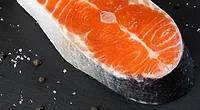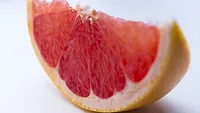Pesticide Residues Top EU Food Safety Alerts for 2022, a Record Year for Notifications

The year 2022 saw record numbers of food safety notifications transmitted through crucial EU networks, and many notifications related to noncompliances caused by pesticide residues, according to the European Commission’s Alert and Cooperation Network 2022 Annual Report. The report covers all information shared during 2022 through iRASFF, a web portal that includes the Rapid Alert System for Food and Feed network (RASFF), the Administrative Assistance and Cooperation network (AAC), and the Agrifood Fraud Network (FFN).
RASFF enables authorities to rapidly exchange information on serious threats to human health in relation to food or feed, or serious risks to human or animal health or to the environment in relation to feed. AAC allows authorities to share information on cross-border violations of EU agrifood chain legislation that do not present an immediate health risk. Finally, FFN facilitates cooperation on food fraud cases.
AAC and FFN registered the highest number of notifications ever in 2022. For RASFF, 2022 ranked second after 2021 regarding the number of original notifications circulated. In line with 2020 and 2021, pesticide residues was the most important hazard for health-related cases, with 990 RASFF notifications.
Over the course of 2022, 4,361 RASFF and 2,554 AAC notifications were transmitted in iRASFF. Follow-ups provide supplementary information to the original notification (such as measures taken and traceability information), while conversations enable network members to rapidly interact with each other. As of early 2023, RASFF notifications originated in 2022 already generated nearly 15,000 follow-up notifications, and more than 2,500 follow-ups were generated from AAC notifications. Furthermore, a total of almost 12,000 RASFF, AAC, and FFN conversations were held.
In 2022, 600 notifications for suspicions of fraud were registered. These notifications are requests for cooperation among network members—they are not confirmed frauds. Among fraud suspicions the most frequent request for cooperation has been related to the illegal movement of cats and dogs.
The European Commission regularly reviews all information in iRASFF to assess if they comply with the necessary criteria to be transmitted and if they are shared in the appropriate network. The commission elevated 74 AAC notifications to RASFF as they posed a health risk. RASFF and AAC notifications are also regularly analyzed to find potential frauds. Fraud elements were detected in 1,168 RASFF and 530 AAC notifications. When a suspicious case is found, the European Commission invites the countries concerned to initiate appropriate fraud investigations.
RASFF
Of the 4,361 RASFF notifications registered in 2022, 3,904 concerned food, 234 feed, and 219 food contact material (FCM). In 2022, 21 incidents were identified in RASFF. An incident is created when two or more RASFF notifications are linked, and the most common incident type concerned accidental or environmental contamination (11 incidents).
Looking for quick answers on food safety topics?
Try Ask FSM, our new smart AI search tool.
Ask FSM →
Border rejection notifications accounted for 1,514 cases, concerning products that were blocked at the external borders of the EU and the European Economic Area (EEA) when a health risk was found. Border rejections are the only notification type that registered an increase in comparison with 2021, by 3.1 percent.
Aside from border rejections, the most reported notification basis for goods detected on the market was an official control on the market (1,322), followed by a company’s own check (933), a consumer complaint (200), and monitoring of media (99).
In line with the previous three years, Germany remained the most active EU country in RASFF in 2022, with 586 notifications transmitted. The Netherlands (559) followed Germany in number of notifications with an increase of 25.9 percent compared to 2021, followed by Belgium (428) and Poland (320). Germany and the Netherlands were also the top reporting Member States in terms of follow-ups created in 2022 (6,921 and 4,589 respectively), followed by Belgium (3,296) and Italy (3,099). The most common European countries of origin were Poland, with 312 notifications, and the Netherlands, with 257.
Pesticide Residues
Like in 2021, pesticide residues were the most notified issue in RASFF in 2022, with 990 notifications. This is a decrease from the 1,231 pesticide residue notifications seen in 2021. The most commonly implicated product category for 2022 is fruits and vegetables with 594 notifications, in 396 cases of which pesticide residues were detected during border controls, and on the market in 198 cases. The second top reported product category was herbs and spices (116).
Pesticide residues issues escalated to RASFF most frequently involved fruits and vegetables from Türkiye, with 430 notifications. The top reporting country was Bulgaria (212), followed by Germany (100). Additionally, the most commonly implicated pesticides were chlorpyrifos (251), ethylene oxide and 2-chloroethanol (186), and chlorpyrifos-methyl (142).
Pathogenic Microorganisms and Foodborne Illness Outbreaks
Behind pesticide residues, pathogenic microorganisms were the second most reported hazard category in food in RASFF, with 857 notifications. The most common food categories were poultry meat and poultry meat products (300); and nuts, nut products, and seeds (122).
Similarly to 2021, Salmonella was the most reported pathogenic microorganism with 603 notifications, followed by Listeria monocytogenes (132) and Escherichia coli (41), all primarily detected in products of animal origin. A total of 190 Salmonella notifications concerned poultry meat and poultry meat products from Poland, and the top reported food category for L. monocytogenes was fish and fish products (37 notifications). The vast majority of detections of E. coli concerned Shiga toxin-producing E. coli (39), found mainly in meat and meat products, other than poultry (25). Finally, Bacillus cereus was involved in 10 notifications.
In 2022, 41 notifications on foodborne outbreaks were transmitted in RASFF, 12 of which identified Salmonella as the likely cause. A total of seven notifications were linked to L. monocytogenes, five to histamine poisoning, and four to norovirus. Additionally, seven notifications were related to a multi-country foodborne illness outbreak.
Other Notifications
In 2022, mycotoxins were the third most notified hazard category with 485 notifications—a 10.5 percent increase compared to 2021. These mainly regarded the detection of aflatoxins (413), and the product category nuts, nut products and seeds (254). The top reported origin was the U.S. (53).
Allergens were detected in a large number of notifications (210), with cereals and bakery products as top reported product category (32) and milk as the most common allergen notified (46). Issues related to composition were reported in 208 notifications, primarily concerning dietetic foods, food supplements, fortified foods (140 notifications), and findings of unauthorized substances such as yohimbine (31).
A total of 219 notifications concerning FCMs were transmitted in 2022, approximately half of which (105) related to the migration of a wide variety of substances. The majority concerned primary aromatic amines (38), followed by formaldehyde (13) and lead (10). A total of 77 original notifications reported the unauthorized use of bamboo. Most original notifications reported on FCMs (152) originating from China. The top reporting Member State was Spain (34), followed by Poland (26) and Ireland (20).
AAC
2022 saw 2,554 AAC notifications, confirming the steady increase in the use of the network since its creation. Most AAC notifications concerned cases related to food (85.1 percent), followed by feed (6.6 percent), live animals (5 percent), FCMs (3.1 percent) and plant health and plant protection products (0.2 percent).
The top reported product category was fruits and vegetables (17.3 percent), of which 340 notifications concerned the detection of pesticide residues. The second-most notified category was dietetic foods, food supplements, and fortified foods (9.5 percent). Typical cases regarded noncompliant labeling or claims (125), which were primarily claims of products having preventing, treating, and curing abilities. Other common noncompliances were product composition, with 65 notifications, followed by poor hygiene conditions were created under faulty processing or storage conditions (39).
Cases involving poultry meat and poultry meat products doubled compared to 2021 and were notified in 4.8 percent of cases. Most notifications (63) concerned the detection of Salmonella, Campylobacter, or hygiene deficiencies in the manufacturing plant.
FFN
In 2022, the number of notifications exchanged by FFN related to suspicions of fraud reached a total of 600, with a significant increase compared to 2021 (407), impacted greatly by EU Coordinated Actions carried out regarding adulterated honey and illegal pet trade. The EU Coordinated Action on illegal trade of cats and dogs represented a total of 46 percent (276) of FFN notifications. The remaining 54 percent (324) notifications pertained largely to honey and royal jelly (51), live animals (27), meat and meat products (25), fish and fish products (25), and fats and oils (22).
In 2022, the top reported category was adulteration/product tampering, accounting for 47.8 percent of FFN notifications. Misdescription/mislabeling/misbranding ranked second (22.5 percent), followed by “gray market” issues (16.1 percent), document forgery (9.3 percent) and counterfeit (4.3 percent).








